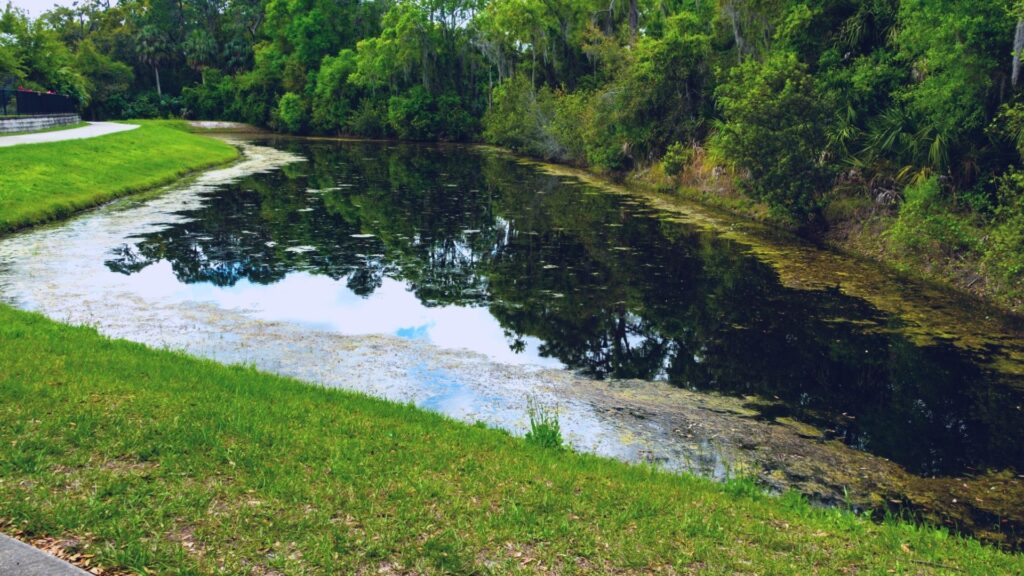Detention Basin & Retention Basin Pros & Cons
Both retention and detention basins provide a safe way to collect stormwater and release it via underground pipes and evaporation over time.

Detention basins and retention basins both contain stormwater and release it slowly to prevent flooding, contamination, erosion, and more.
Stormwater is caused by excess rain, snow, or melting ice that the ground cannot absorb quickly enough to prevent flooding. Stormwater runoff occurs when roads, sidewalks, and other developments cannot absorb water like the natural ground can, causing the water to start flowing. Even minor precipitation can quickly turn into stormwater runoff in urban or developed areas.
Both retention and detention basins provide a safe way to collect stormwater and release it via underground pipes and evaporation over time. However, there are some key differences between the two that may determine which method you choose to protect your home, property, or business. Let’s take a look at some of the pros and cons of each stormwater containment option.
Detention Ponds: Pros & Cons
What Is a Detention Basin?
A detention basin, also known as a detention pond, holds excess water generated by storms to prevent flooding. The land is designed to slope down into a basin, creating the perfect spot for water to run during a storm.
After the storm, the detention basin slowly dries out. An orifice at the bottom of the detention pond drains the basin via an underground pipe. Some amount of the detention pond simply evaporates away once the weather clears. In between storms, detention basins are completely dry, often blending in with the rest of the landscape.
Benefits of Detention Ponds
- Inexpensive
- Take up less space
- Often completely dry between storms
Detention basins are an inexpensive solution to stormwater management. They often require less space than wet retention basins.
Dry detention ponds use only a very gentle slope and often have plant life surrounding them to provide extra protection. Plants can act as an additional method of flood prevention since their roots soak up excess water and stabilize the ground, preventing erosion. Because they are not full of water all of the time, dry detention ponds can also be a great option for drier climates that need to protect themselves from rare but damaging floods.
Disadvantages of Detention Basins
- Create an eyesore that may decrease property values
- Attract mosquitoes
- Neglect to improve water quality
Even though they’re smaller than retention ponds, detention basins still require a sizable amount of land. They also are not the most predictable or visually appealing stormwater solutions. Instead of having a pleasant pond to look at year-round, a detention basin drains and dries over time, creating an eyesore in the process. During particularly rainy or stormy seasons, your detention basin may look more like a giant, accidental puddle than a legitimate stormwater solution fulfilling its purpose.
Detention ponds can also carry the risk of disease or contamination. Unlike retention ponds, they do nothing to improve the water quality of the collected stormwater. Additionally, draining and drying detention ponds are the perfect breeding ground for mosquitoes, which can carry dangerous diseases and infections.
Retention Ponds: Pros & Cons
What Is a Retention Basin?
A retention basin, also known as a retention pond, is also designed to contain stormwater and runoff. However, retention ponds never completely drain or dry. Instead, they maintain a certain amount of water, achieved by underground pipes. To prevent overflowing, they also have a small outlet for water to go out safely.
Benefits of Retention Ponds
- Added property value
- Pleasing to look at
- Can sometimes be used for recreational purposes
- Improve water quality
Retention ponds can actually add value to your property. Just like normal ponds, retention ponds are full of water year-round. With natural vegetation surrounding the basin to prevent erosion, they can actually look rather picturesque. In some cases, it’s even safe to use retention ponds for recreational purposes.
Retention basins are safer than detention ponds because they actually improve the quality of the water they collect. Retaining the water allows sediments to settle out of it in a process called sedimentation. Surrounding vegetation can also provide a level of natural filtration.
Disadvantages of Retention Basins
- Require lots of land
- Can decrease water quality and be an eyesore if poorly designed
- Attract mosquitoes
A lot of land is required to design an effective retention basin—and the risks of designing an ineffective one can be severe. Poorly designed retention ponds can actually decrease the quality of the water they collect. They can also present a drowning hazard.
Just like detention ponds, retention basins are the perfect breeding ground for mosquitoes. Depending on the design of the retention pond, local property owners may consider it an eyesore.
TrapBag® Stormwater Containment Solutions
Whether you decide a retention basin or a detention basin is right for your property, TrapBag® can help. Our rapidly deployable TrapBags® can be used to set up a stormwater containment pool or pond in a short time. They’re trusted for emergencies as well as for more permanent stormwater containment solutions.[/vc_column_text][/vc_column][/vc_row]
Meet the author
Get the Dirt Before the Flood Hits
Stay ahead of flooding, erosion, and disaster response challenges. The Dirt, TrapBag’s monthly newsletter, delivers field-tested tips, real-world case studies, and the latest in barrier technology straight to your inbox.

